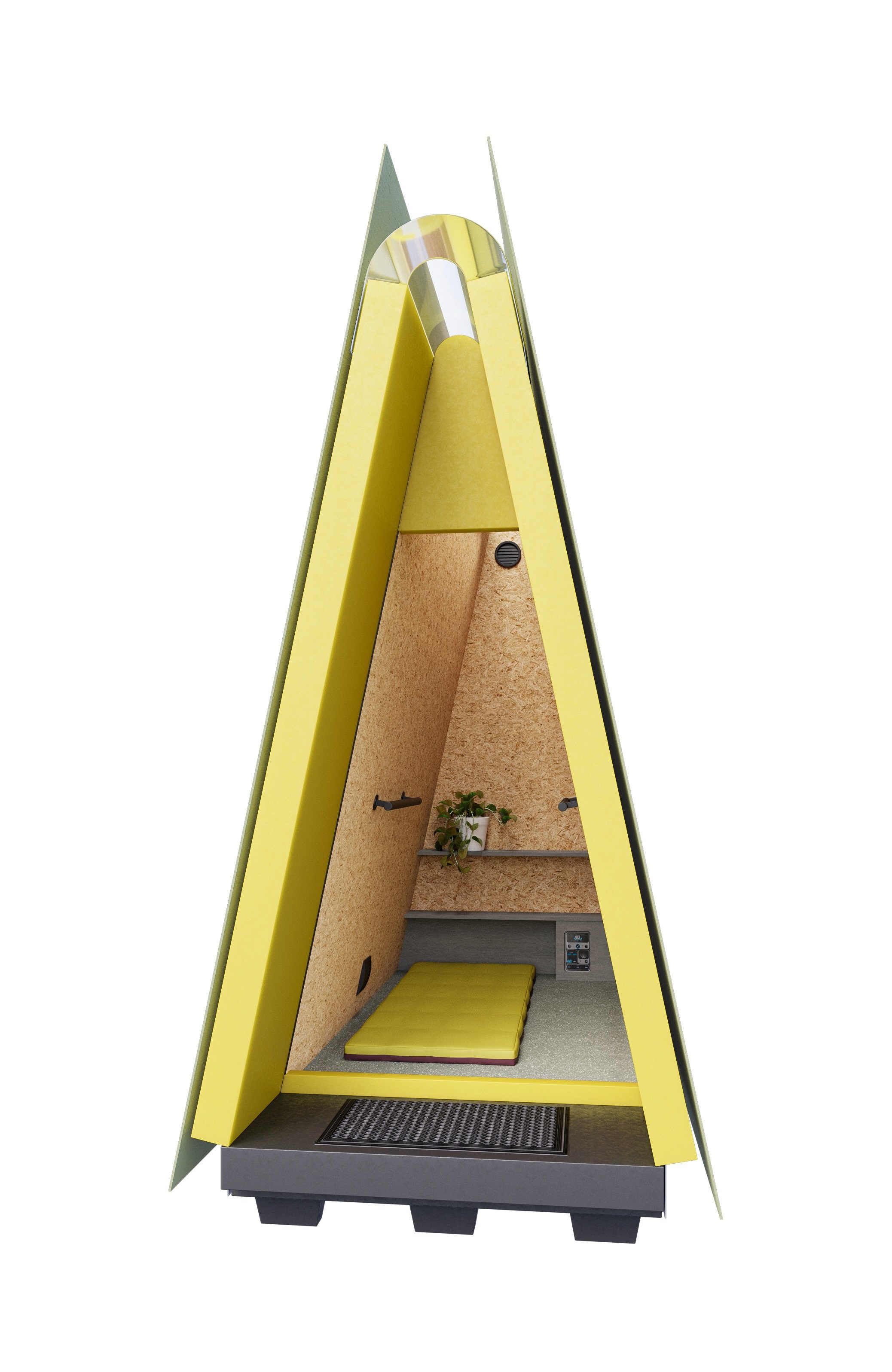emergency shelters
This ‘emergency shelter’ (or homeless pod) represents just the first step toward a more permanent home. Sometimes referred to as an individual “night shelter,” it provides the most basic and essential needs: a safe, secure space and a sleep pad. Without this, many people may otherwise be forced to sleep rough.
With a compact footprint, the shelter is designed to require minimal space, making it possible for councils to install small clusters on or near pavements, or in other urban settings with appropriate permissions. They can also be situated within the grounds of charities, churches, or housing associations.
from £9,000 each (ex VAT & delivery) or from £210/month (£7/night) for 5 years*
![[NOW] shelter 01.png](https://images.squarespace-cdn.com/content/v1/67fa59f9aa4ef55d92d7ea8e/c5c892d6-64d0-474c-b161-a7c93ae88453/%5BNOW%5D+shelter+01.png)
![[NOW] shelter 02.png](https://images.squarespace-cdn.com/content/v1/67fa59f9aa4ef55d92d7ea8e/f7ec6d5a-38ea-4de0-81dd-99e25557e2aa/%5BNOW%5D+shelter+02.png)
![[NOW] shelter 03.png](https://images.squarespace-cdn.com/content/v1/67fa59f9aa4ef55d92d7ea8e/cc2715b0-bf22-42d6-a304-52f90281837a/%5BNOW%5D+shelter+03.png)
![[NOW] shelter 04.png](https://images.squarespace-cdn.com/content/v1/67fa59f9aa4ef55d92d7ea8e/753ce5a2-50ed-4db2-b731-25035d18918a/%5BNOW%5D+shelter+04.png)
![[NOW] shelter 05.png](https://images.squarespace-cdn.com/content/v1/67fa59f9aa4ef55d92d7ea8e/748df47c-6cc1-4e60-9021-b7a5a7308ecd/%5BNOW%5D+shelter+05.png)
![[NOW] shelter 06.png](https://images.squarespace-cdn.com/content/v1/67fa59f9aa4ef55d92d7ea8e/726ee5af-0aae-45e7-a28f-fa5196cf3003/%5BNOW%5D+shelter+06.png)
![[NOW] shelter 07.png](https://images.squarespace-cdn.com/content/v1/67fa59f9aa4ef55d92d7ea8e/32ed1d21-a7fa-4f9d-9528-3238c47f196b/%5BNOW%5D+shelter+07.png)
![[NOW] shelter 08.png](https://images.squarespace-cdn.com/content/v1/67fa59f9aa4ef55d92d7ea8e/caba31cd-62d2-4462-98fa-34546c8c5129/%5BNOW%5D+shelter+08.png)
![[NOW] shelter 09.png](https://images.squarespace-cdn.com/content/v1/67fa59f9aa4ef55d92d7ea8e/d7ea2c62-14ae-4cfd-8d93-79ddb45a9bc0/%5BNOW%5D+shelter+09.png)
![[NOW] shelter 10.png](https://images.squarespace-cdn.com/content/v1/67fa59f9aa4ef55d92d7ea8e/c5fa4e3f-5f32-4d6d-ad41-945f42ac81fe/%5BNOW%5D+shelter+10.png)
![[NOW] shelter 11.png](https://images.squarespace-cdn.com/content/v1/67fa59f9aa4ef55d92d7ea8e/8e2dada5-3b50-4afb-8214-b76d40670144/%5BNOW%5D+shelter+11.png)
![[NOW] shelter 12.png](https://images.squarespace-cdn.com/content/v1/67fa59f9aa4ef55d92d7ea8e/6eb88a0e-271c-4c9e-baf5-f987005db67e/%5BNOW%5D+shelter+12.png)
![[NOW] shelter 13.png](https://images.squarespace-cdn.com/content/v1/67fa59f9aa4ef55d92d7ea8e/762715bf-fc66-455e-9d60-b6adf1698976/%5BNOW%5D+shelter+13.png)
![[NOW] shelter 14.png](https://images.squarespace-cdn.com/content/v1/67fa59f9aa4ef55d92d7ea8e/d91a1e67-3f5a-44cf-827d-662127408e14/%5BNOW%5D+shelter+14.png)
![[NOW] shelter 15.png](https://images.squarespace-cdn.com/content/v1/67fa59f9aa4ef55d92d7ea8e/5875740f-06a0-4d09-8a5e-22db1dc9692c/%5BNOW%5D+shelter+15.png)
* Financing available to qualified customers, subject to credit approval and credit limit.
These shelters help reduce reliance on both primary and secondary care services by protecting individuals from extreme temperatures, supporting personal hygiene, and improving safety. They may also enhance quality of life and reduce the risk of drug- or alcohol-related harm, mental health crises, and preventable medical emergencies.
The National Institute for Health and Care Excellence (NICE), with the Centre for Homelessness Impact, produced “Integrated Health and Social Care for People Experiencing Homelessness”. While it doesn’t explicitly recommend street shelters or pods, it focuses on integrated, long-term strategies to meet complex health and care needs.
We fully support this long-term vision. However, the reality is that many people are currently sleeping rough, without access to even the most basic human need: shelter.
Ideally, everyone would have access to self-contained accommodation with a private washroom, kitchen, and a proper bed. But for many, that is still out of reach. Emergency shelters offer a crucial first step—getting people off the streets, out of doorways, and away from unsafe tent encampments.
Any form of shelter reduces the health risks of rough sleeping—such as exposure, hypothermia, and worsening chronic conditions. These temporary units also act as a bridge to more stable housing and services.
![[NOW] homes - emergency shelters & temporary accommodation](http://images.squarespace-cdn.com/content/v1/67fa59f9aa4ef55d92d7ea8e/f56e7e93-36d3-4798-9d7f-b77de1472221/wudl-NOW-logo.png?format=1500w)
![[NOW] homes - emergency shelters & temporary accommodation](http://images.squarespace-cdn.com/content/v1/67fa59f9aa4ef55d92d7ea8e/e30d05e5-2d7c-4a40-861c-25e1f8c9029a/wudl-%5BNOW%5D-logo.png?format=1500w)




